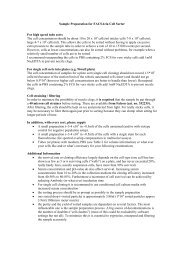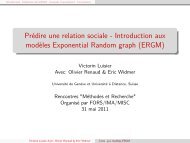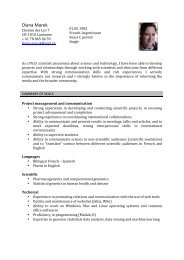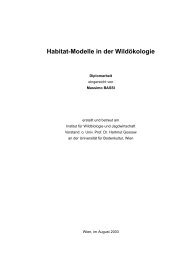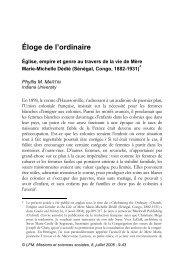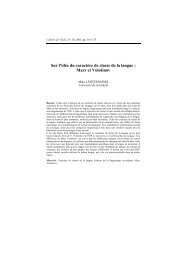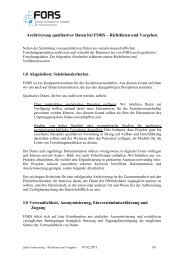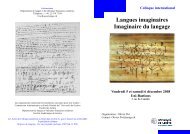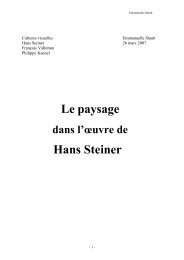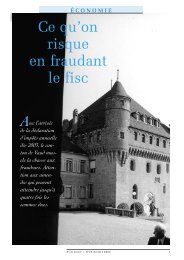conference programme book - European Survey Research ...
conference programme book - European Survey Research ...
conference programme book - European Survey Research ...
Create successful ePaper yourself
Turn your PDF publications into a flip-book with our unique Google optimized e-Paper software.
WEDNESDAY 20 JULY 1072.41.1 Measuring Authoritarianism with Different Sets of Items in a Longitudinal StudyT. Toharudin 1 , H. Oud 2 , J. Billiet 3 , H. Folmer 41 University of Padjadjaran, Indonesia; 2 Radboud Universiteit Nijmegen, Netherlands; 3 Katholieke UniversiteitLeuven, Belgium; 4 University of Groningen, NetherlandsIn the General Elecon Study in Belgium (Interuniversitair Steunpunt Polieke-Opinieonderzoek K.U. Leuven,1991, 1995, and 1999), authoritarianism was measured in each of the wave years 1991, 1995, 1999 by sevenitems. However, only two items were the same in all of the three waves. A series of congenericness tests asproposed by Jöreskog (1971, 1974) is performed to find out which of the items in each of the waves can beconsidered to measure the same latent variable and can therefore be used in a longitudinal study to assessthe development of authoritarianism over me. We find that three of the items in 1999 did not pass thecongenericness test convincingly.2.41.2 Sensivity of conclusions to incorrect assumpons about cross-naonal measurement equivalenceJ. Kuha 2 , I. Moustaki 1 , S. Stares 21 London School of Economics and Polical Science, United Kingdom; 2 London School of Economics, UnitedKingdomIn latent variable modelling of cross-naonal survey data, substanve interest usually focuses on the distribu-ons of the latent variables, for example on cross-naonal comparisons of averages or on models for associa-ons between the latent variables. In contrast, the measurement models for the observed indicator variablesare typically of lesser interest, and any complexies in these models a source more of nuisance than of excitement.2.41.3 Cross-Naonal and Cross-Ethnic Differences in Atudes. A Case of LuxemburgM. Kankaraš 1 , G. Moors 11 Tilburg University, NetherlandsUsing a case of Luxembourg a cross-cultural comparave perspecve is linked to between as well as withincountry comparisons by answering a two-folded queson. First we analyzed the level of measurement equivalence,i.e. the extent to which ethnic groups in Luxembourg and cizen of their countries of origin assignthe same meaning to atude quesons. Secondly, we examined whether ethnic-cultural groups within Luxembourgresemble cizens from their nave country more than Luxembourger’s atudes, i.e. we comparedthe relave influence of a given naonal context and cultural background of Luxembourg’s minories on theiratudes. We selected three scales from the <strong>European</strong> Value Study, wave 2008/2009 to demonstrate differenttypes of result from such analyses...2.41.4 When are item intercept differences substanal in measurement equivalence tesng?B. Meuleman 11 University of Leuven, BelgiumApplied comparave researchers are becoming increasingly aware of the issue of measurement equivalence.By now, there exists considerable agreement on the concrete operaonalizaon and implicaons of (the variouslevels of) measurement equivalence. Mulple group confirmatory factor analysis (MGCFA) has becomewidely recognized as a useful stascal tool to test for equivalence. In this framework, measurement equivalenceis assessed by constraining certain parameters – e.g. factor loadings or item intercepts - across groups.2.42 Effects of Interviewers in Sample <strong>Survey</strong>s ITo be held on July 20, 2011 from: 16:00 to 17:30, in room 319.



